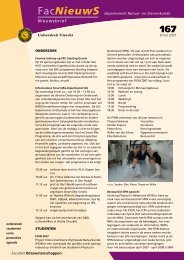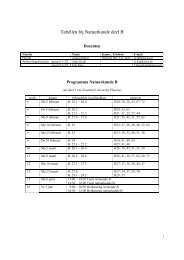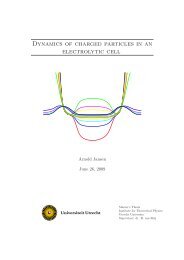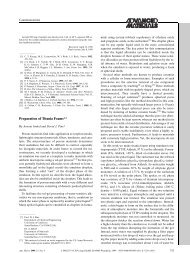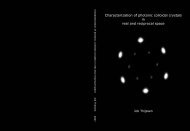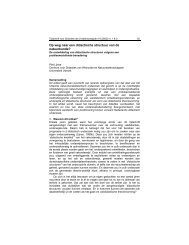Sedimentation Equilibrium of Mixtures of Charged Colloids
Sedimentation Equilibrium of Mixtures of Charged Colloids
Sedimentation Equilibrium of Mixtures of Charged Colloids
You also want an ePaper? Increase the reach of your titles
YUMPU automatically turns print PDFs into web optimized ePapers that Google loves.
widths ξ i and block heights b i :n∑ξ i = Hi=1n∑b i ξ i = H ¯ηi=1(C.4)(C.5)Figure C.1 shows the full numerical solutions <strong>of</strong> a ternary system, with standardparameters as in tab. 4.1, charge number Z = (3000, 2500, 2000) andgravitational length L = (4, 3, 2)mm, together with the approximation withthe block model.0.010.008η i0.0060.0040.00200 5 10 15 20x (cm)Figure C.1: The full numerical solutions <strong>of</strong> a ternary system, with standardparameters as in tab. 4.1, charge number Z = (3000, 2500, 2000) and gravitationallength L = (4, 3, 2)mm, together with the approximation with theblock modelConclusion The block model is not accurate. It needs a fit parameter forthe jump constant t i . Moreover, the crossovers do not seem to be proportionalto ((Z N L n ) −2 − (Z n−1 L n−1 ) −2 ). A reason can be given by the lengths overwhich the crossovers take place, about 4 cm per crossover. A second reasonis the fact that the slopes <strong>of</strong> the pr<strong>of</strong>iles are not taken into account. Theslope model is therefore more accurate, and does not provide (much) morework.70



